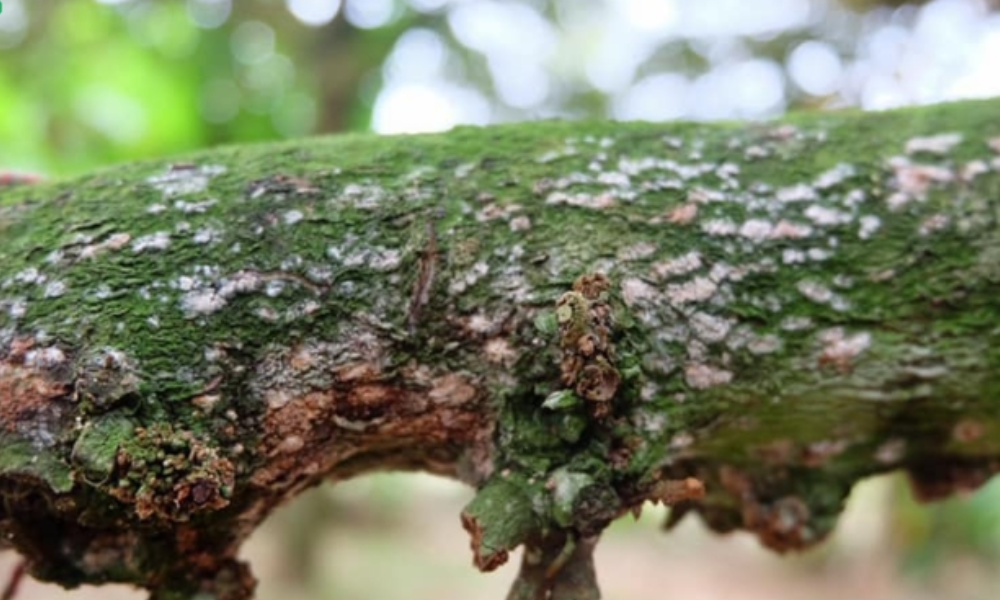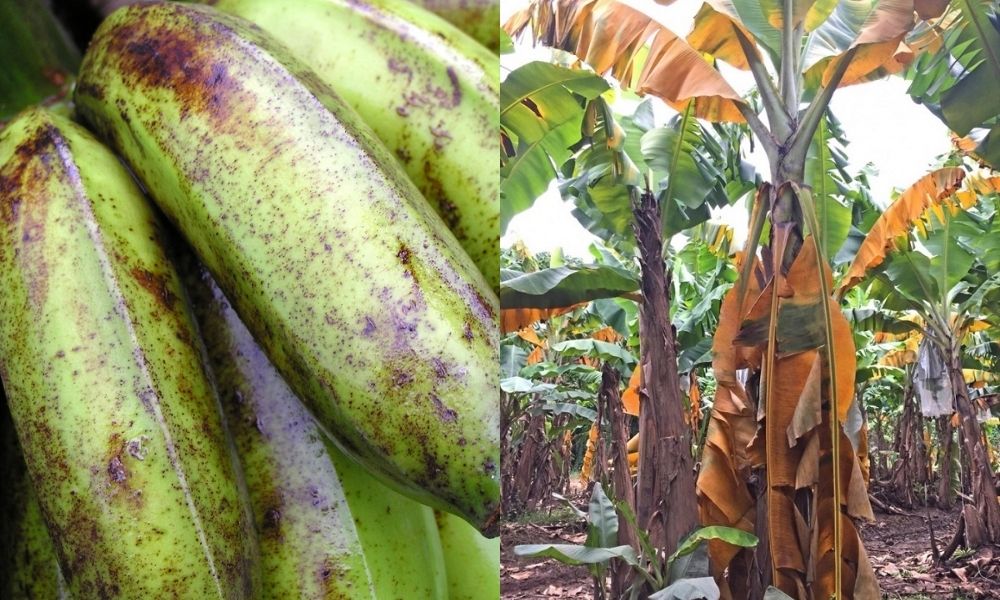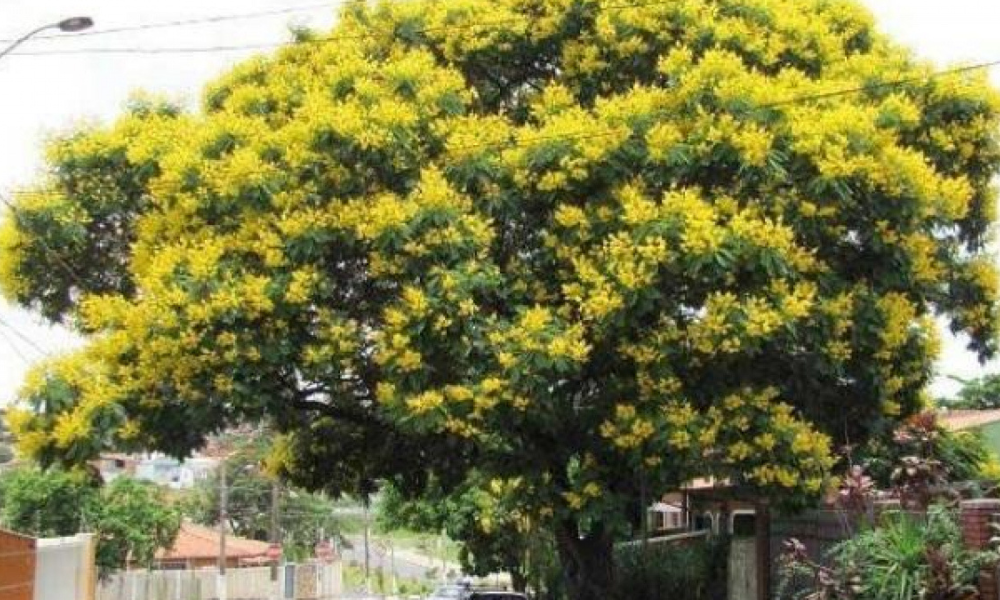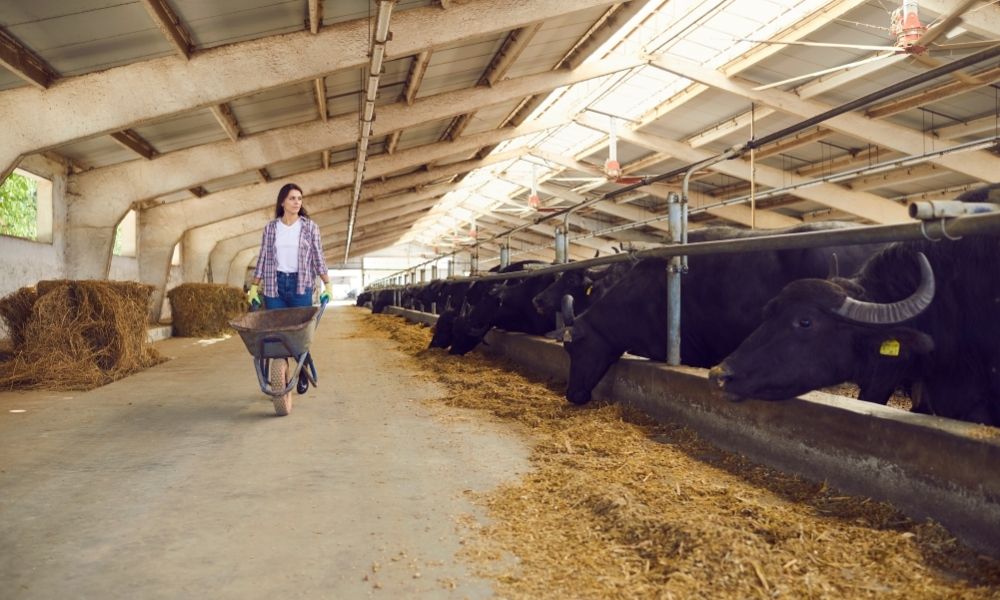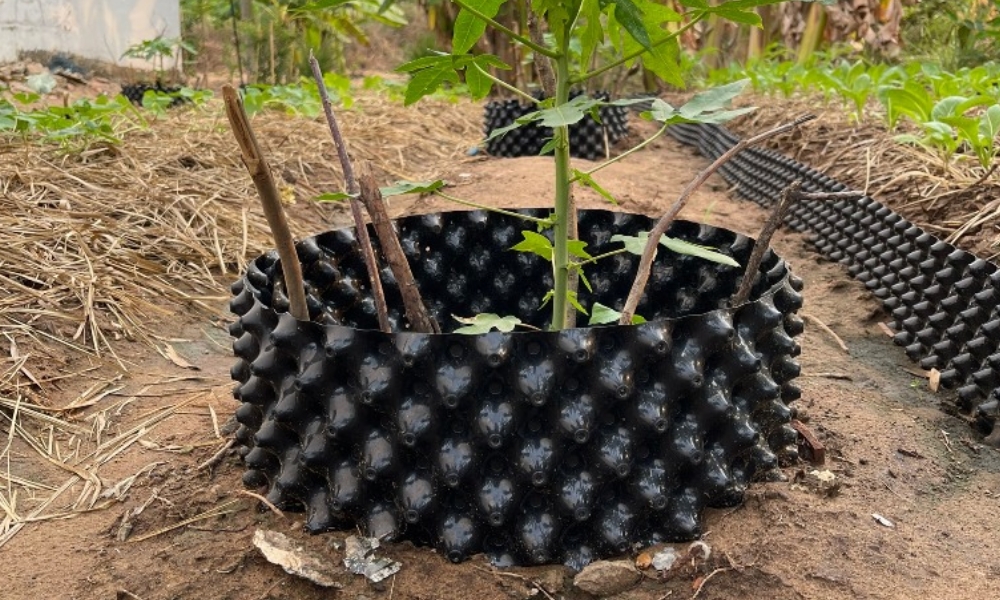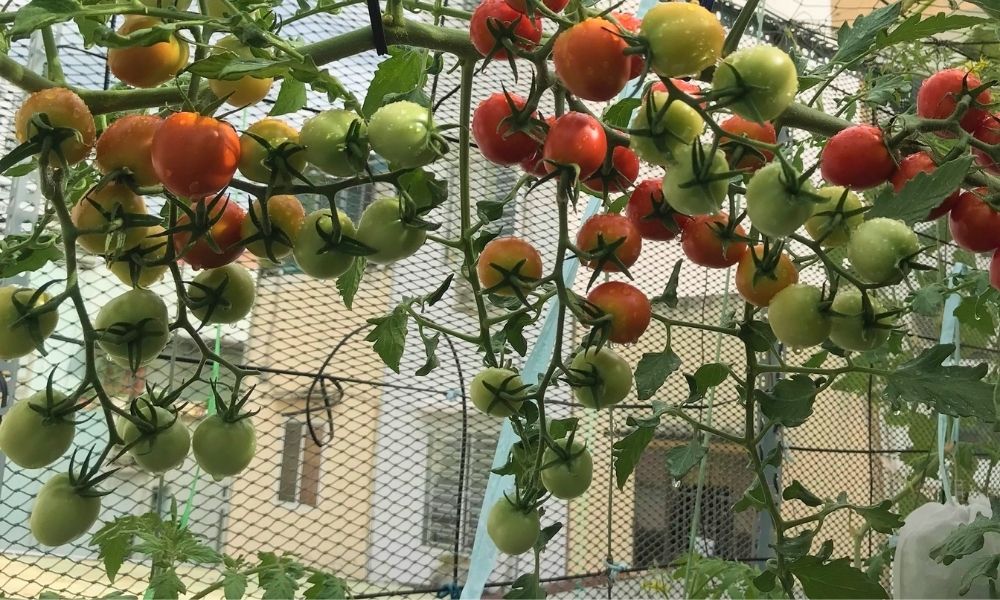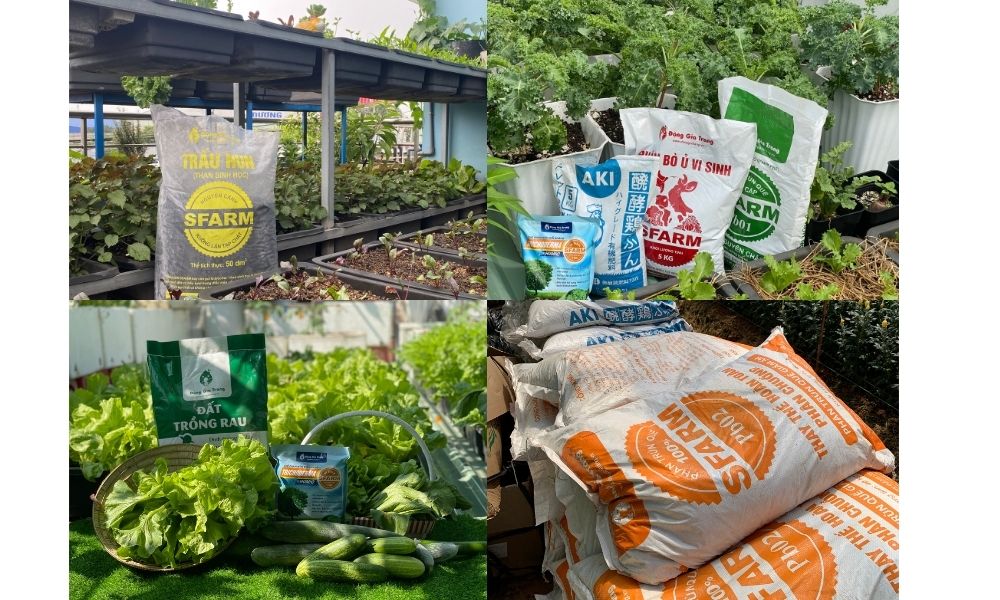pH đất là gì? Độ pH nào thích hợp cho cây trồng?
In order to create the best conditions for plants to grow and develop healthy, the soil environment plays an extremely important role. In the observation criteria in the soil, the pH of the soil is an important scale, helping to determine whether the status in the soil is appropriate or not. However, this is also a fairly vague concept and many growers do not understand how to identify the soil pH for their plants. Today, let’s join Dang Gia Trang Answering the above questions!
1/ What is pH?
pH or pH index (also known as pH) is an index with a scale of 1 to 14. Reflecting the alkaline properties or acid of a certain environment. In fact, the main types of land have a pH of 5.0 to 8.0, depending on the type of crop that we must adjust accordingly. The soils with pH are from 5.0 to 8.0 are often not suitable for cultivation.
2/ Classification of soil through pH?
What is neutral soil with a pH? The soil has a pH = 7 is a neutral soil type, does not control acid, suitable for many crops
How much is alkaline soil? The soil has a pH> 7 is an alkaline soil, which needs to be renovated by applying acidification substances such as sulfur, sulfate iron, …
What is the pH soil? The soil has a pH
3/ Purpose of determining pH? Meaning and determination time
3.1 Determine the correct soil pH for the purpose
+ As a basis to choose the type of crop to suit the soil
+ Or vice versa to know how you need to affect on the growing land to achieve the goal of increasing income from agricultural production.
3.2 Meaning of pH index for farmers
+ For new land, the initial pH index helps you orient to choose which crops or soil improvement in advance to suit the plant you want to grow.
+ For cultivated land, the soil pH indicates how to impact on the soil appropriately, creating conditions for plants to grow and develop best.
+ When plants have signs such as slow growth, yellow leaves, roots do not grow, … should also pay attention to checking the pH concentration of the soil.
3.3 Time to check the pH level for the soil
Checking the soil pH can be conducted at all times and on all types of soil. However, measuring pH in some cases such as: Immediately after lime application, fertilizer, additional organic matter, … will cause high errors when measuring.
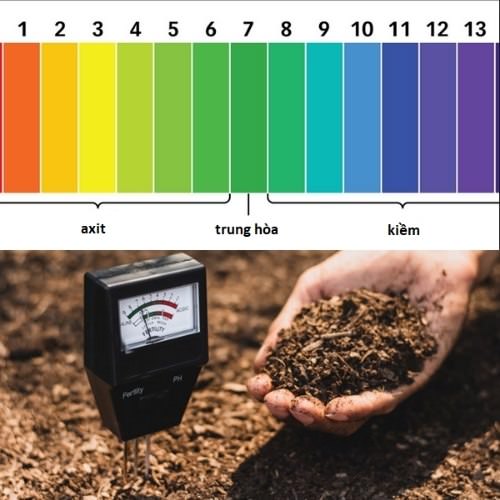 Measure soil pH
Measure soil pH
4/ How to check pH in the soil
Currently, there are many ways to check the pH in the soil such as: measured by machine, measured by pH test paper, chemical measurement, …
4.1 Measure soil pH with chemicals
Measured by chemicals today is often rarely used, due to chemical preparation and must ensure the purity of that chemical to have accurate results. This method is very complicated and usually only applies to laboratories, or people with chemical expertise.
4.2 Measure soil pH with pH measurement paper (purple litmus paper)
This is the simplest and easiest method, often used by many people, due to cheap costs, results for high accuracy, easy to implement. To perform measurement by this method, people only need to go to plant protection drug agents, buy a box of pH and distilled water. Afterward
+ Take samples of land for cultivation (or the most developed soil in the soil)
+ Put the soil sample into a glass of distilled water, stir and settle for 15-20 minutes
+ Take the kneeling paper into the diluted soil solution, so that the water absorbs the surface of the kneeling paper (2/3).
Testing the test paper for about 1 minute, the test paper will change color, people only need to compare the color with the color palette printed on the lid of the box, there are 14 color ladders corresponding to 14 pH scale.
Distinguishing pH values:
Based on the value of the pH measurement:
pH
pH = 3.5 – 5.0: Heavy soil
pH = 5.1 – 6.0: Sour soil
pH = 6.1 – 6.5: Light acidic soil
pH = 6.6 – 7.3: Neutral soil
pH = 7.4 – 7.8: Slightly alkaline soil
pH = 7.9 – 8.4: Alkaline soil
pH = 8.5 – 9.0: Heavy alkaline soil
PH> 9.0: Super alkaline land
4.4 Measure soil pH with a pH meter
Use the meter for more accurate results, faster and can be used many times. However, the meter loses high investment costs, the maintenance of the meter also faces many difficulties. The meter you can contact the plant protection agents to equip itself, when buying the machine will have the accompanying user instructions. The usual measurement is to dip the needle to the test sample, on the machine there will be a pH show of the test sample.
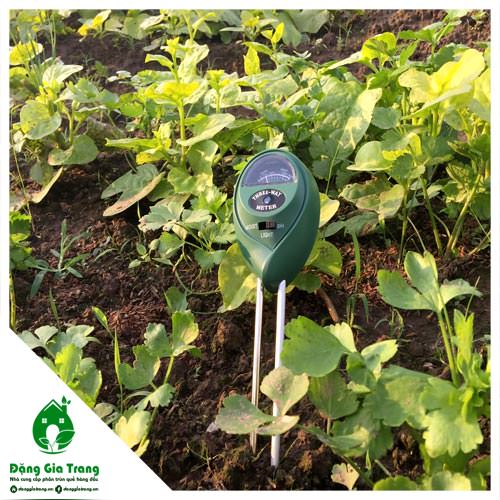
5/ The pH is suitable for crops
Each type of crop will have a different appropriate pH, invite you to refer to the pH of the common crops listed in the table below.
| Crop | Suitable pH | Crop | Suitable pH |
| Mealies) | 5.7 – 7.5 | Tea | 5.0 – 6.0 |
| They are pregnant | 5.5 – 6.8 | Pepper | 5.5 – 7.0 |
| Broccoli | 6.0 – 6.5 | Cigarette | 5.5 – 6.5 |
| Tomato | 6.0 – 7.0 | Dragon fruit | 4.0 – 6.0 |
| Coffee | 6.0 – 6.5 | Cauliflower | 5.5 – 7.0 |
| Carrot | 5.5 – 7.0 | Chilli | 6.0 – 7.5 |
| Eggplant | 6.0 – 7.0 | Grape | 6.0 – 7.5 |
| Cabbage | 6.5 – 7.0 | Cane | 5.0 – 8.0 |
| Radish | 5.8 – 6.8 | Apricot | 6.5 – 7.0 |
| Broadcast | 6.5 – 7.0 | Paddy | 5.5 – 6.5 |
| Citrus | 5.5 -6.0 | Lily | 6.0 – 8.0 |
| Rubber | 5.0 – 6.8 | Potato | 5.0 – 6.0 |
| Sandy | 5.5 – 7.5 | Sweet potato | 5.5 – 6.8 |
| Carnation | 6.0 – 6.8 | Orchids | 6.5 – 7.0 |
| Hydrangeas | 4.5 – 8.0 | Rose | 5.9 – 7.0 |
| Bean | 6.0 – 7.0 | Japanese daisies | 6.0 – 8.0 |
| Peanut | 5.3 – 6.6 | Garlic onion | 6.0 – 7.0 |
| Strawberry | 5.5 – 6.8 | Ginger | 6.0 – 6.5 |
| Soybean | 5.5 – 7.0 | Cucumber | 6.0 – 7.0 |
| Coin | 6.5 – 7.0 | Spice | 5.5 – 7.0 |
| Watermelon | 5.5 – 6.5 | Cassava (cassava) | 6.0 – 7.0 |
| Salad | 6.0 – 7.0 | Avocado | 5.0 – 6.0 |
| Cotton | 5.0 – 7.0 | Cucumber | 6.5 – 7.0 |
| Tea tree | 4.5 – 5.5 | Banana | 6.0 – 6.5 |
| Onion | 6.4 – 7.9 | Tomato | 6.3 – 6.7 |
6/ Read comprehension of pH measurement results and how to improve land
6.1 The pH of the soil From 3.0 – 5.0
– Characteristic
A high acidic soil (very sour soil). Plants cannot absorb nutrients such as potassium (k), phot pho (p), bo (b), molipden (mo.), … Although they are still present in the soil, due to high acidity, these elements cannot be dissolved and held in the soil. Most types of microorganisms cannot work to decompose organic matter, leading to tight soil, poor nutrition …
– Reason
+ Due to the soil structure: The soil has a light structure, sloping soil, sand and gravel soil is often susceptible to washing and becoming sour soil.
+ Rainwater and excess irrigation water wrapped in alkaline substances such as Ca (calcium), Mg (magnesium), K (potassium) down to the deep land or rivers and streams of Ao Lake. Making the soil lose alkaline to become sour
+ Long -time growth plants on the soil, absorbing nutrients from the soil such as N, P, K and micronutrients such as calcium, magnesium … Long time the soil loses alkali substances to become sour
+ Abuse of chemical fertilizers, pesticides, herbicides, stimulants … after a long time leading to sour soil, bottles and barren
+ Organic resolution: emitting a variety of carbon dioxide acids (H2CO3), sulfuric acid (H2SO4), nitric acid (HNO3) acetic acid (CH3COOH) … These acids dissolve Ca, Mg and wash away, make soil acidic soil
+ Applying acid -based mineral fertilizer such as: ammonium sulfate (SA), potassium chloride (KCl), potassium sulfate (K2SO4), Suppe Lan … also causes sour soil.
– Affect
+ Limiting the growth of crops, reducing agricultural production
+ High soil with high acid Al ions easily lead to poisoning for roots, causing roots to be confined and faltered.
+ Crops are difficult to absorb micronutrients K, Ca, Mg … leading to shortage of these nutrients.
+ Most types of microorganisms cannot work to decompose organic matter leading to tight soil, poor nutrition …
– Measures to renovate
+ Applying phosphorus:
- Provide nutrition for plants, poison alum.
- Use Super Lan or combine foliar fertilizer spray containing phosphorus.
+ Fertilizing organic fertilizer:
- Has the effect of improving the soil porous, increasing the content of organic humus …
- The beneficial microorganisms in the stool when the toxins cause alum toxic, reducing toxicity for plants.
+ Lime application: It is necessary to supplement lime to improve the acidity in the soil, raise the pH higher.
- Helps nutrients in the soil easier to dissolve.
- Improve soil structure.
- Provide nutrients like Ca, Mg for plants.
- Promote the development of useful microorganisms.
- Neutralize acidity caused by fertilizers.
- Reduce toxic substances affect plants (heavy metals are strongly dissolved when pH is low)
– The rate of lime fertilization improves pH (for sour soil)
+ With high land with high lightning ratio (meat soil, heavy soil)
- pH = 3.5 – 4.5 fertilize 2 tons of lime for 1 hectare (equivalent to 2 quintals / 1000 m2)
- pH = 4.5 – 5.5 fertilize 1 ton of lime for 1 hectare (equivalent to 1 quintal / 1000 m2)
- pH = 5.5 – 6.5 fertilize 0.5 tons of lime for 1 hectare (equivalent to 50kg / 1000 m2)
+ With high land with high sand ratio
- pH = 3.5 – 4.5 apply 1 ton of lime for 1 hectare (1 quintal / 1000 m2)
- pH = 4.5 – 5.5 fertilize 0.5 tons of lime for 1 hectare (50 kg / 1000 m2)
- pH = 5.5 – 6.5 fertilize 0.25 tons of lime for 1 hectare (25kg / 1000 m2)
When applying lime, it is necessary to combine with the methods of digging soil, helping lime to be mixed into the soil.
6.2 The pH of the soil 5.1 – 6.0
– Characteristic
The soil is acidic. This land is suitable for azaleas family such as: azaleas, camellia, jelly tree …
– Impact measures
Supplementing lime if you want to grow other crops, especially lime plants such as legumes.
6.3 The pH of the soil 6.1 – 7
– Characteristic
Medium acid soil (average soil). This soil is suitable for most common crops, except for lime plants. The amount of nutrition in the soil always maintains the appropriate state for plants to grow well. Most of the beneficial microorganisms in the soil will work well in this pH environment.
– affect crops
+ The amount of nutrition in the soil always maintains the appropriate state for good growth plants.
+ The process of absorption and nutrition exchange between root system and soil is done smoothly to help plants thrive.
+ The beneficial microorganisms in the soil works well in the environment with this pH range.
– Land improvement method: With this soil basically no further impact, then note always maintain a balanced state between inorganic and organic content to protect the soil.
6.4 PH of soil from 7.1 – 8
– Characteristic
The soil is slightly alkaline. Suitable for planting legumes. In alkaline soil environments Manganese (MN), iron (Fe) … will be reduced to dissolve, causing imbalance with calcium (CA), resulting in yellow plants in new growth parts.
– Land improvement measures
If you want to reduce alkalinity, you can add elements such as sulfur, sulfate iron, ….
In order to create a nutritious and sustainable soil environment, less degenerative, use of organic fertilizers to contribute to the improvement of land. In particular, earthworm fertilizer is a type of organic fertilizer of completely natural origin, helps to balance pH in the soil, soil improvement, supplying diverse microorganisms and essential nutrients for crops. Hopefully, through the basic knowledge of the pH in the soil, it will help you identify the appropriate crop or adjust the best pH for your plants. For more information, please contact Hotline 0902.652.099 okay!
Sfarm.vn
*See also:
Chuyên mục: Kiến thức làm vườn
Nguồn: lol.edu.vn

 0934.19.6789
0934.19.6789
